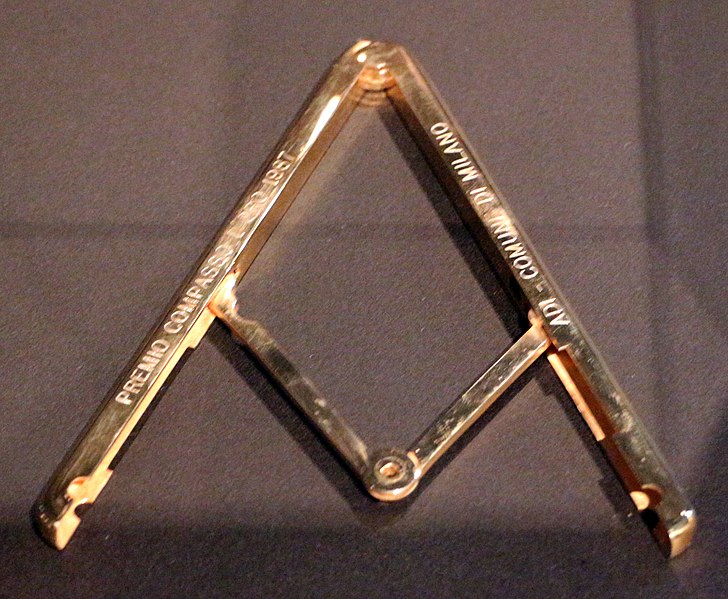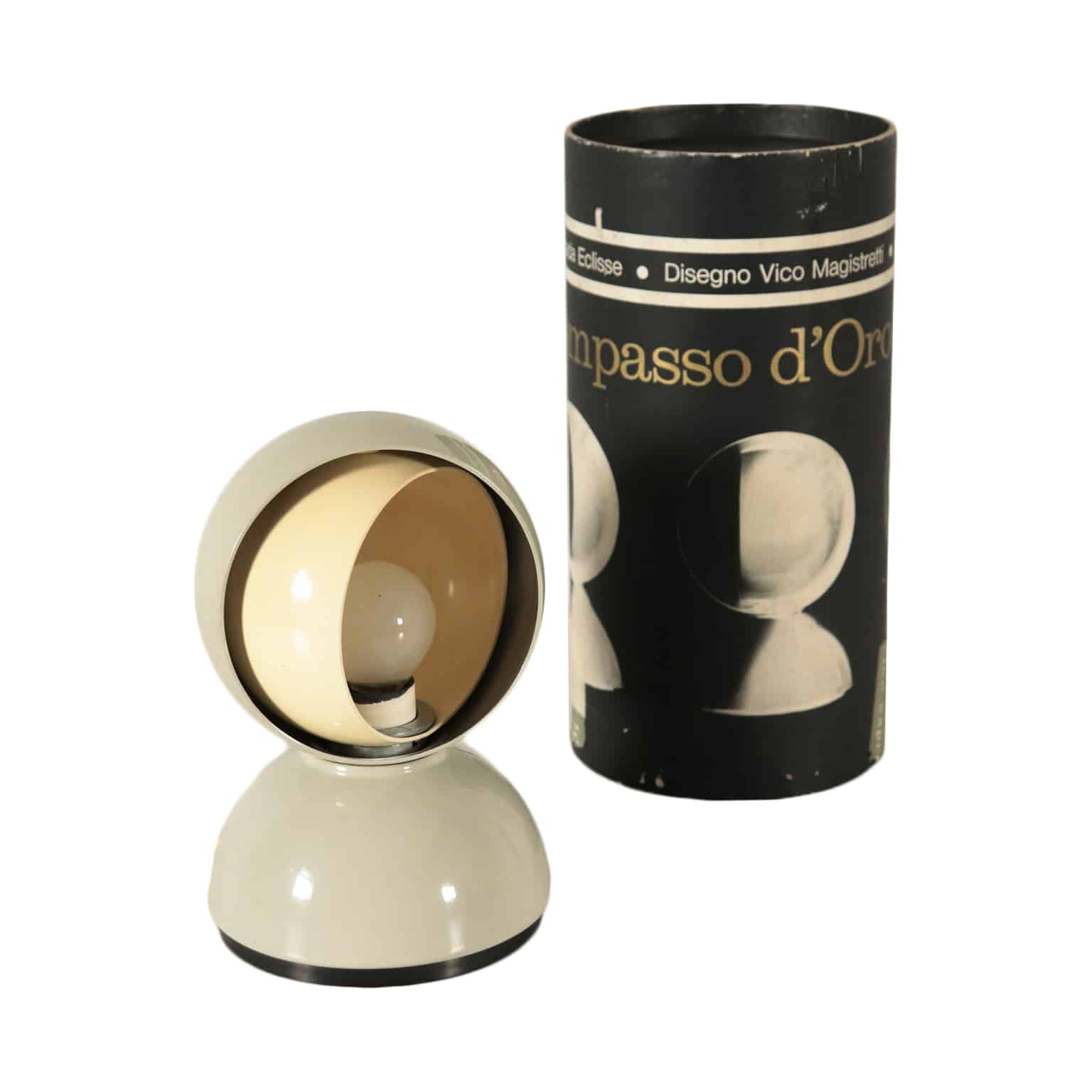Compasso d’Oro and ADI Museum
It was none other than Gio Ponti, one of Italy’s best-known architects, who promoted what still stands today as the most important award of the Italian design.
The Compasso d’Oro was in fact conceived in 1954, initially sponsored by the La Rinascente department store, to be entrusted since 1958 to ADI (Assocazione per il Disegno Industriale), established two years earlier.
The design of the award is by Albe Steiner, using the physicist Adalbert Goeringer’s compasses as a model to draw the golden section, but the actual development was the work of architects Marco Zanuso and Alberto Rosselli, with the shapes still known today.
The establishment of this award in the 1950s offers an interesting insight into the situation of Italian industry and design at the time.

It was in the years following the Second World War that a real mass-production of goods took place in Italy, also thanks to the increasing economic prosperity of the population.
The development of companies in which mechanization became not only a boast, but above all an indispensable feature of the increased demand, opened up a debate that had already taken place in
in other countries in the previous century.
The craftsmanship of the workshops disappeared in favour of mass and serial production for the new and emerging middle class.
But how to maintain high quality and aesthetics in the face of this new production mode?

The architects who began to take an interest not only in the design of buildings and large spaces, but also in the architecture of everyday products, from furniture to objects, from machines to domestic appliances, while the functionality of the same remained unchanged.
he need was therefore felt to establish an award that would recognise the best projects and designs distinguished by their quality and aesthetics.
But not only the Compasso d’Oro, honourable mentions and career prizes also became an integral part of the competition, recognising the most outstanding personalities of the Italian scenario.
The prestigious award is still held every two years and features an international jury, which selects products and designs on the basis of various evaluations, not least the use of new technologies and environmental impact, issues that are certainly central to modern industry.

The importance of the Compasso d’Oro was immediately clear, so much so that the award-winning objects were brought together in a now historical collection, the care of which has been entrusted to the Fondazione ADI Collezione Compasso d’Oro since 2001.
The ambitious project was to promote the collection through a museum and for this reason, the ADI Design Museum was created, made possible also thanks to the contribution of the City of Milan, which in 2011 granted a free loan for the building in which it is located, allowing the exhibition of the historical collection, which currently includes more than 2,300 projects and products.
But not only the permanent collection, the museum also hosts temporary exhibitions focusing on specific themes, in order to enhance and disseminate design and the culture of which it is the bearer.
The building housing the collection also follows the same line: in fact, it is a 1930s structure, a historic place used as a depot for horse-drawn trams and an electricity distribution plant, which has been recovered and enhanced as an expression of industrial archaeology.

The importance of the historical collection and its cultural value is such that it was also recognised by the Ministry of Cultural Heritage-Regional Superintendency for Lombardy, which declared it to be of ‘exceptional artistic and historical interest’ with a decree in 2004, effectively accrediting it to the national heritage with all the necessary protection, care and exploitation.
With the reopening of the museum in a new guise in 2021, interesting projects have also been undertaken in
this regard, such as archiving the works and the conservative restoration of some of them, thanks to the students of the Restoration course at the Aldo Galli Academy of Fine Arts in Como and in agreement with the IED, which is one of the new institutional partners.
A real revolution, an official and prestigious recognition dedicated to industrial products and design, which are no longer just objects but become, like the works of the past, the clear expression of an era’s taste and identity customs.



